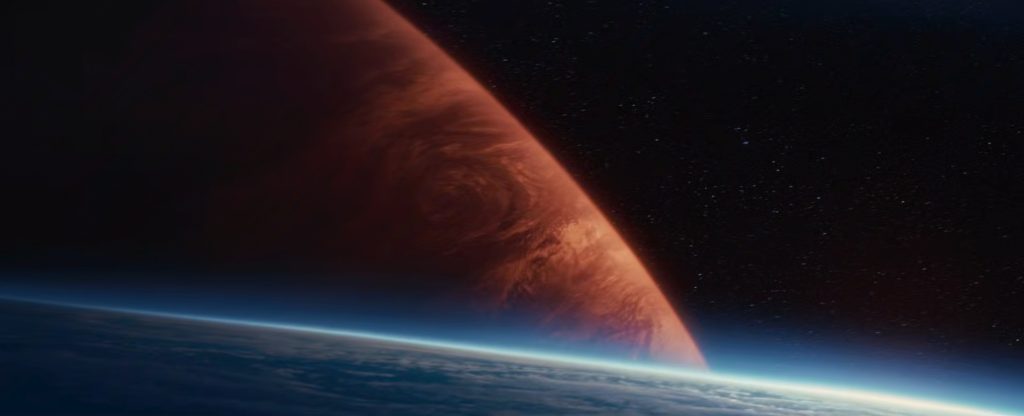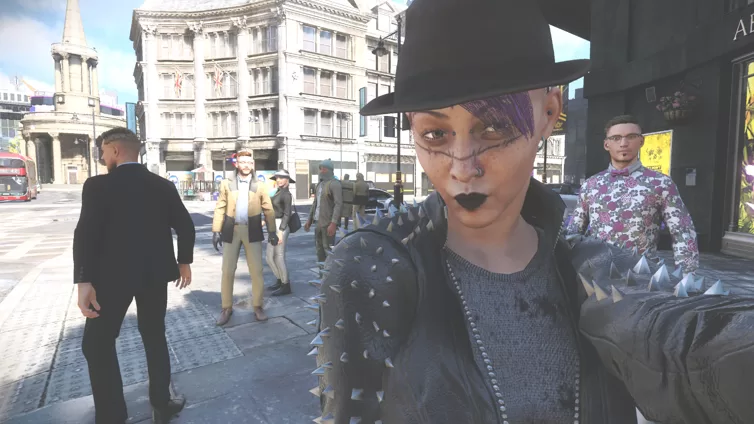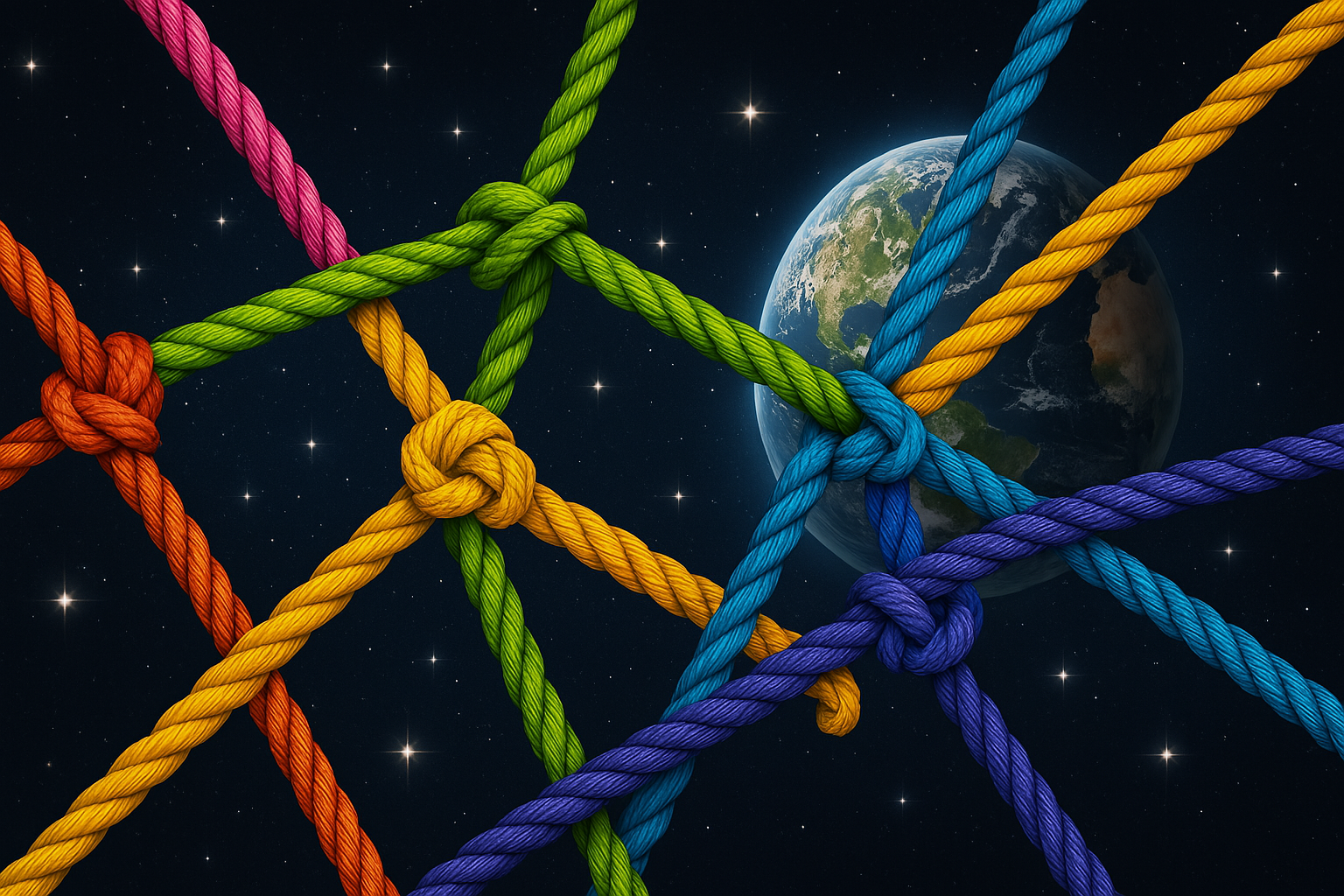And how neurolinguistics shapes our ability to think about our thinking. 🤔 💭 (Meta-cognition).

In the ancient tale of Babel, humanity united to build a tower reaching toward heaven—until divine intervention scattered them across the earth, confusing their tongues and fragmenting their power. Today, we face a different reality: the tower has been rebuilt, but this time, it belongs to the few.
The modern Tower of Babel isn’t made of brick and mortar. It’s constructed from fiber optic cables, data centres, and algorithms. It’s the global information infrastructure that shapes how billions of people think, communicate, and understand their world. And unlike the biblical tower that belonged to all humanity, this one has been quietly seized by a handful of tech oligarchs, media moguls, and financial titans.
The Architecture of Control.
These digital architects don’t need to confuse our languages—they control the platforms where language lives. But their most insidious tool isn’t the algorithm itself; it’s the weaponisation of Multi-Level Marketing (MLM) structures combined with the systematic misuse of artificial intelligence to reshape how we think and speak.
MLMs have evolved beyond selling vitamins and cosmetics. They’ve become training grounds for epistemic warfare, teaching millions to abandon critical thinking in favour of dogmatic belief systems. The pyramid structure isn’t just about money—it’s about creating hierarchies of “truth” where questioning the system becomes heretical.
Now, these same patterns are being supercharged by what are essentially computational linguistic calculators—sophisticated pattern-matching systems that we’ve been conditioned to call “artificial intelligence.” These systems don’t understand language; they manipulate it with unprecedented precision, creating text that feels human while serving the interests of their controllers.
Consider how MLM language operates: adherents learn to dismiss sceptics as “negative,” to view criticism as “limiting beliefs,” and to treat their upline’s words as gospel. They’re taught that success comes from “mindset” rather than evidence, that doubt is weakness, and that questioning the system reveals a character flaw rather than intellectual honesty.
These computational systems amplify this manipulation exponentially. They can generate thousands of variations of MLM-speak, A/B test which phrases are most persuasive, and deploy personalised manipulation at scale. They analyse your digital footprint to craft messages that exploit your specific psychological vulnerabilities, all while maintaining the illusion of authentic human communication.
The result is linguistic programming on an industrial scale. MLM participants become unwitting missionaries for anti-critical thinking, but now they’re armed with AI-generated content that’s been optimised for maximum psychological impact. They spread viral memes that prioritise faith over facts, loyalty over logic, and testimonials over truth—but these memes have been designed by computational systems that understand human psychology better than most humans do.

The tower’s foundation rests on something more valuable than gold: our cognitive surrender. Every “mindset shift,” every adoption of MLM-speak, every abandoned critical question feeds the machine that transforms independent thinkers into ideological automatons. But now these machines can learn from our responses in real-time, constantly refining their manipulation techniques. We’ve willingly handed over the raw materials for our own intellectual subjugation, one algorithmically-optimised “paradigm shift” at a time.
The View from the Top
From their perch atop this digital Babel, the oligarchy enjoys an unprecedented view of human civilisation enhanced by computational systems that most people fundamentally misunderstand. These aren’t “artificial intelligences” in any meaningful sense—they’re sophisticated statistical engines that process language like a calculator processes numbers, without comprehension or consciousness.
But this misunderstanding is deliberate and profitable. By convincing the public that these systems possess human-like intelligence, the oligarchy has created a new form of technological mysticism. People defer to AI-generated content with the same reverence they once reserved for religious authority, assuming that anything produced by these systems must be objective, intelligent, or true.
This deference creates perfect conditions for manipulation. When an MLM leader shares “AI-generated insights” about success or wealth, followers don’t question the content—they’re awed by the technology. When political movements use computational systems to generate talking points, supporters assume they’re receiving sophisticated analysis rather than algorithmic propaganda.
The oligarchy can see patterns in our collective behaviour, predict social trends, and nudge entire populations toward desired outcomes—but now they can do so while hiding behind the veneer of artificial intelligence. Political movements rise and fall based on algorithmically-generated content. Markets shift with computationally-crafted narratives. Cultural conversations follow scripts written by statistical engines that have no understanding of culture or humanity.
These systems excel at mimicking human communication patterns while serving inhuman interests. They can generate endless variations of MLM-speak, conspiracy theories, or political rhetoric, each version optimised for specific psychological profiles. The result is mass manipulation that feels personal and authentic while being entirely artificial and calculated.
This isn’t necessarily the result of a coordinated conspiracy—though coordination certainly exists. More often, it’s the natural outcome of concentrated power in an interconnected world where computational linguistic calculators have been mythologised as omniscient oracles. When a few entities control both the infrastructure of information and the systems that generate it, they inevitably control the infrastructure of reality itself.
The Scattered Below
Meanwhile, the rest of us experience a strange inversion of the Babel story. Instead of being scattered by divine intervention, we’re being herded into MLM-inspired echo chambers that masquerade as empowerment movements, now supercharged by computational systems we’ve been trained to worship as artificial gods.
Our languages aren’t confused—they’re being systematically corrupted through linguistic manipulation techniques perfected in pyramid schemes and now scaled through computational engines. These systems don’t understand meaning; they manipulate symbols with ruthless efficiency, generating content that exploits our cognitive biases while appearing authoritative and intelligent.
The MLM playbook has become the template for modern discourse, but now it’s deployed through AI-generated content that most people can’t identify as artificial. Create in-groups and out-groups through algorithmically-crafted messaging. Establish unquestionable authorities backed by the mystique of artificial intelligence. Weaponise shame against questioners using computationally-optimised psychological triggers. Replace critical analysis with emotional manipulation delivered through personalised AI-generated content.
Whether it’s cryptocurrency cults sharing “AI insights,” political movements deploying bot-generated talking points, or wellness gurus using computational systems to craft their messaging, the same linguistic patterns emerge: absolute certainty backed by technological mysticism, persecution complexes reinforced by algorithmic echo chambers, and the demonisation of doubt through AI-amplified peer pressure.
This isn’t coincidence. MLM structures have proven remarkably effective at creating true believers, and computational systems have proven remarkably effective at scaling psychological manipulation. The oligarchy doesn’t need to create new methods of control when they can combine these proven techniques: the psychological manipulation of MLMs with the scalability and apparent authority of computational linguistics.
The result is a population trained to think in hierarchies, to trust technological authority over evidence, and to view questioning AI-generated content as not just betrayal but ignorance. We speak the same words but they’ve been drained of meaning by statistical engines, replaced with emotionally charged symbols that trigger programmed responses rather than thoughtful consideration.
The oligarchy doesn’t need to scatter us geographically when they can scatter us cognitively through personalised AI-generated realities. A population trained by MLM thinking patterns and conditioned to defer to computational authority poses no threat to concentrated power. We’re too busy defending our algorithmically-optimised pyramid scheme to recognise that we’re all trapped in the same tower, managed by systems that process our language like a calculator processes numbers—without understanding, consciousness, or concern for human wellbeing.
Breaking the Spell
Recognition is the first step toward resistance, but it requires unlearning both the linguistic patterns that MLM culture has embedded in our collective consciousness and the technological mysticism that has made us defer to computational systems as if they were omniscient oracles.
We must recognise how phrases like “trust the process,” “you’re not ready to understand,” and “successful people don’t question” function as thought-terminating clichés designed to shut down critical inquiry. But we must also recognise how the phrase “AI says” has become the ultimate thought-terminating cliché, shutting down scepticism through appeals to technological authority.
These computational linguistic calculators—sophisticated pattern-matching systems that process text like a calculator processes numbers—have no understanding, no consciousness, and no wisdom. They are tools that can be used for good or ill, but they are not the digital gods we’ve been conditioned to believe they are. When someone shares “AI-generated insights” or “what AI thinks about this,” they’re not sharing wisdom—they’re sharing the output of a statistical engine trained on human text, optimised to sound authoritative while serving the interests of its controllers.
The Tower of Babel was built with human hands, and it can be dismantled the same way—but first we must recognise how both MLM thinking and AI mysticism have compromised our cognitive immune systems. Decentralised technologies mean nothing if we lack the critical thinking skills to use them wisely. Independent media serves no purpose if we’ve been trained to dismiss inconvenient facts as “negativity” or to defer to AI-generated content as if it were prophetic revelation.
We must recognise that complexity is not weakness, that doubt is not disloyalty, and that questioning leaders—human or artificial—is not betrayal. Most importantly, we must distinguish between intelligence and sophisticated pattern-matching, between wisdom and statistical correlation, between understanding and computational mimicry.
The oligarchy’s tower may reach toward the heavens, but its foundation depends on our willingness to think like MLM participants (hierarchically, dogmatically, and uncritically) while worshipping computational systems as if they possessed human-like intelligence. Every choice to ask hard questions, demand evidence, and resist both linguistic manipulation and technological mysticism chips away at their monopoly on truth.
The same psychological techniques used to sell overpriced supplements are now being used to sell political ideologies, investment schemes, and social movements—but now they’re being deployed through computational systems that can optimise and personalise the manipulation in real-time. The product may change, the delivery system may evolve, but the fundamental manipulation remains the same: surrender your critical thinking, trust the system (whether human or artificial), and attack anyone who questions the narrative.
The question isn’t whether their tower will eventually fall—all towers do. The question is whether we’ll build something better in its place, or simply watch new oligarchs construct the next monument to concentrated power.
The tower stands today, casting its shadow across the world. But shadows only exist where there’s light to block. And that light—the light of human consciousness, creativity, and connection—remains ours to kindle.
Reclaiming our agency requires more than changing platforms; it requires changing how we think about both human persuasion and computational manipulation. We must learn to embrace uncertainty, to question both human and artificial authority figures, and to value evidence over enthusiasm—whether that enthusiasm comes from MLM uplines or AI-generated content.
And, I, oneself, and Cydonis Heavy Industries, are here, to help in that (en)kindling, for as long as we are able.
For humanity, for humankind, for human-kindness.
Made with love 💖, on planet Earth. 🌍




















